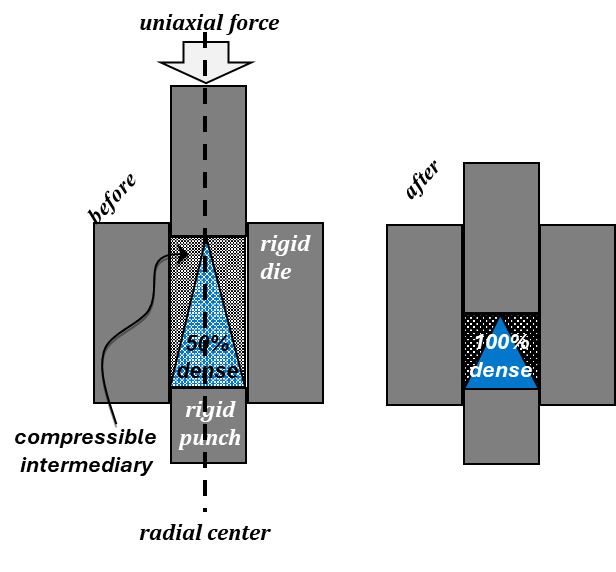High-density, complex-shaped ceramics are needed for a wide range of applications including body armor, turbine blades, and transparent windows. However, dense and complex ceramic parts are difficult to manufacture, requiring high pressures and temperatures and substantial post-machining. Near-net-shaping, where the product is very close to its final form, is currently not feasible using traditional hot pressing since rigid molds suffer from the travel distance problem, i.e. thicker sections of the part must shrink more in absolute distances, and this cannot be accommodated by rigid punches.
LLNL has developed a novel Production of Readily compressible dies for Enhanced Sintering of Solids (PRESS) method for ceramic parts manufacturing that uses compressible, non-sintering powder materials as a mold which can match the compaction of the ceramic powder starting materials during pressure-assisted sintering. PRESS enables uniform deformation of the part under a constant linear travel of the punch system. The resulting process achieves near net shaping of a variable thickness ceramic part during sintering.
Image Caption: Process Diagram for using compressible mold for hot pressing ceramic parts with variable thickness
1. Can tune the compaction ratio to match that of the ceramic powders used to form the final complex shaped component. This is achieved by the right mix of compressible mold powder materials with the appropriate particle sizes and morphologies.
2. Reduced sintering temperatures required to achieve comparable ceramic part density when not using compressible mold.
3. Can achieve higher final ceramic part density (90-100% theoretical) compared to not using compressible mold.
4. Potential to achieve near net shaping of a variable thickness ceramic parts during hot press sintering.
- body armor
- turbine blades
- transparent windows
Current stage of technology development: TRL 2.5
LLNL has filed for patent protection on this invention.


